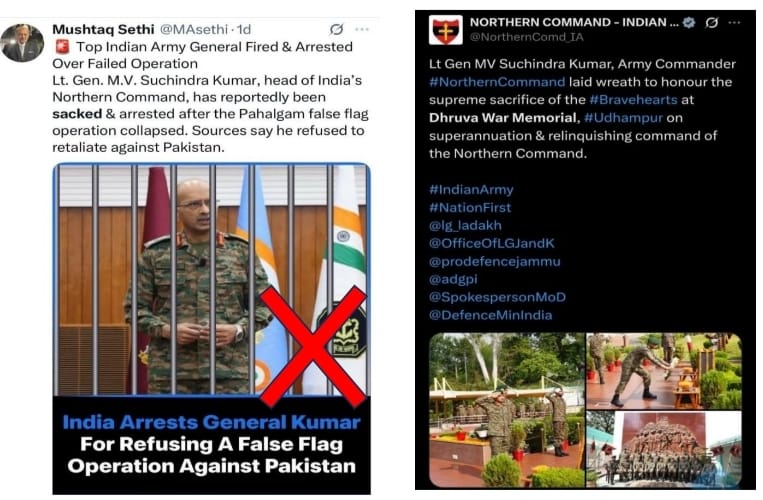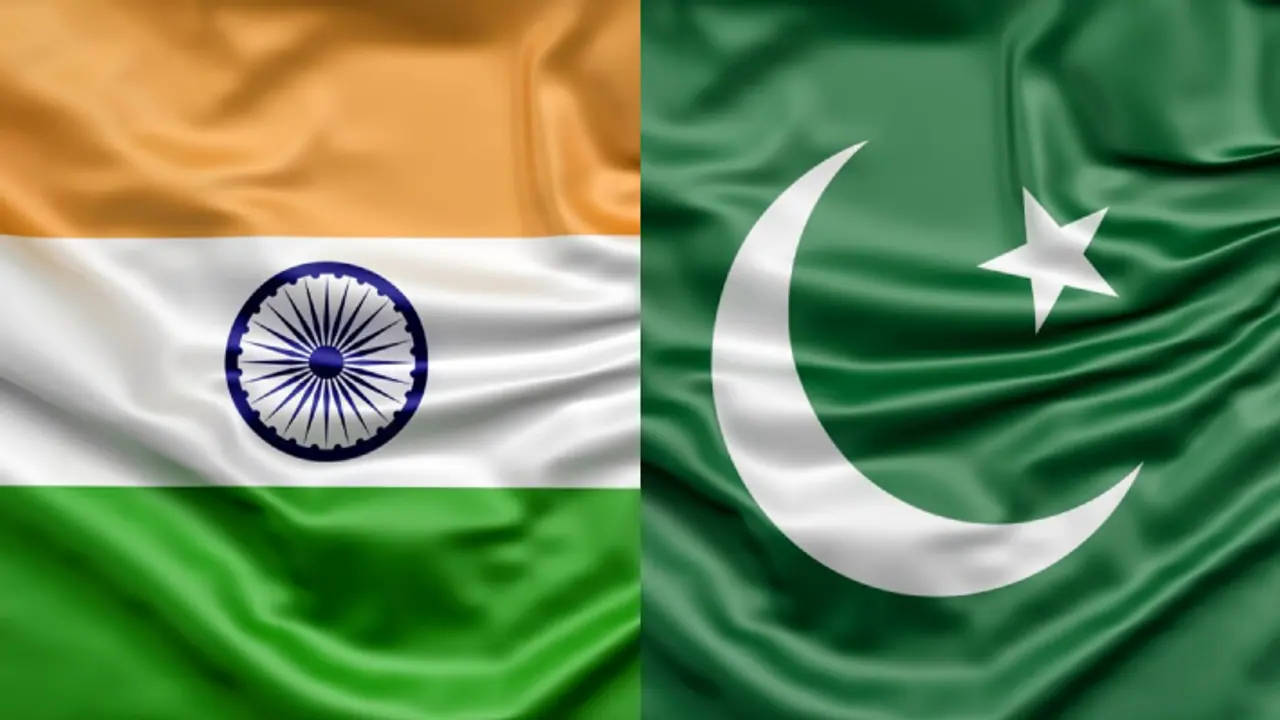After Pahalgam terror attack, Pakistan launched a disinformation campaign targeting senior Indian military leaders. India debunked these claims swiftly, exposing Islamabad’s propaganda war aimed at deflecting from its internal failures.
New Delhi: Completely divorced from operational readiness, the Pakistan military has swung into action on social media after sensing the threat of an imminent attack from India post Pahalgam attack that killed 26 Indians.

After the tensions between India and Pakistan escalated between the two neighbouring countries, following the Pahalgam attack, Pakistani social media has become a battleground of anxiety and propaganda, reflecting deep panic among its leadership and subsequent attempts to control the narrative.
Pakistan’s leadership at this point is creating an environment of panic using misinformation, emotional rhetoric while tapping into the palpable sense of uncertainty among its citizens.
By focusing the public's attention on the threat from India, Pakistan’s leaders and media can divert citizens’ focus away from the country’s internal turmoil, such as political instability, economic hardship, and grave governance issues that Pakistan’s citizens have been subjected to.
Using false narratives, the country aims to garner not only national unity against an external adversary but also sympathy from the global community.
This rally-around-the-flag effect helps mute criticism of the government and military, while also attempting to shift the global community’s attention from Pakistan’s challenges and alleged support for militant groups, framing the crisis as Indian aggression rather than Pakistan’s internal or external failures.
In what can be called a low blow, several Pakistan-based media outlets and affiliated social media handles have initiated a coordinated disinformation campaign aimed at discrediting senior officers of the Indian armed forces.

These efforts have been thoroughly debunked by official records and authoritative fact-checks, once again revealing Islamabad’s habitual reliance on fabricated narratives whenever faced with the possibility of decisive Indian action.
One of the false narratives that the country decided to float was an allegation against a respected officer of the Indian Army, Lieutenant General DS Rana.
Pakistani channels and troll networks claimed that Lieutenant General DS Rana, Director General of the Defence Intelligence Agency, had been “sacked” and sent to the “Kala Pani” penal colony in the Andaman and Nicobar Islands due to alleged “operational failures”.
Far from being dismissed, Lieutenant General Rana has been promoted to rank of Commander-in-Chief in situ means he is now elevated to a higher rank in the same appointment as DG DIA.
He will take over as Commander-in-Chief, Andaman and Nicobar Command (CINCAN) a prestigious tri-services command on June 01, 2025.
Another bogus and laughable story that Pakistan decided to float online was about the former northern army commander, Lieutenant General M V Suchindra Kumar, who superannuated from the Army on April 30, after the completion of his tenure.
He served the Indian Army for four decades with a clean and distinguished record of service.
However, as part of its propaganda, Pakistani social-media handles resorted to insinuating that Lieutenant General Kumar was “shunted out” of Northern Command for security failures due to the Pahalgam attack.
Given Pakistan’s insecurity and lack of preparedness, the routine change of command, which was notified well in advance, was made to look like a forced change.
In addition, even in the case of the Indian Air Force’s Vice Chief of the Air Staff, Air Marshal SP Dharkar, Pakistan built a false narrative claiming that he was “dismissed” for “refusing to fight a war” against Pakistan.
This claim is far from the truth as Air Marshal Dharkar also completed his full tenure and superannuated on April 30, 2025, receiving a ceremonial guard-of-honour and paying homage at the National War Memorial.
Air Marshal Narmdeshwar Tiwari took over as Vice Chief of the Air Staff as part of an orderly succession plan, something that is alien to the Pakistani military, given that heir service terms, especially for top commanders, have historically been subject to political interference, early retirements, or extensions based on shifting power dynamics rather than fixed timelines.
Promotions, retirements, and dismissals are influenced by political considerations and the Pakistani military’s dominant role in governance.
On India’s part, the Headquarters Integrated Defence Staff, Ministry of Defence, and independent media outlets swiftly debunked the claims, preventing the misinformation from gaining domestic traction.
Under India’s Information Technology Rules 2021, the government blocked multiple Pakistan-based channels and accounts sharing fabricated content.
The Indian armed forces maintained full operational readiness, with leadership transitions proceeding smoothly under established protocols.
The false claims emerged shortly after New Delhi’s deliberate diplomatic and military signalling following the Pahalgam attack, indicating a coordinated effort to exploit the immediate aftermath.
Senior Indian military commanders overseeing intelligence, Northern Command operations, and airpower deployment were specifically targeted to undermine confidence in India’s operational readiness.
It is clear that such disinformation and propaganda were amplified by a network of social media accounts linked to Pakistan’s Inter-Services Intelligence (ISI), which have previously propagated false narratives about the Balakot airstrike, surgical strikes, and Rafale fighter jet capabilities.
Pakistan’s latest disinformation campaign reflects its desperation in response to India’s disciplined and firm stance against cross-border terrorism.
The Indian military, guided by transparency, professional ethics, and constitutional accountability, remains focused on its objectives, undeterred by propaganda tactics.


